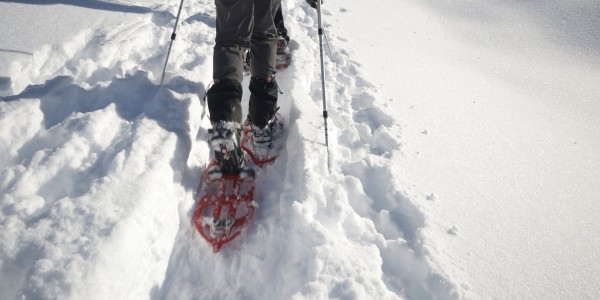VGH staff help save ‘lifeless’ snowshoer
When paramedics brought the still body of Christine Newman into the emergency room of Vancouver General Hospital, critical care physician Dr. Vinay Dhingra says the 24-year-old was in really rough shape.
“She was in full cardiac arrest and had no pulse,” he says. “She was getting CPR and had a breathing tube in her throat so she wasn’t breathing on her own and was essentially lifeless.”
Christine, on a snowshoeing trip near Whistler, was found stuck neck-deep in snow with hypothermia and no vital signs after falling into a 1.5-metre tree well during the night. For the next two hours, the group who found Christine administered CPR until a search and rescue helicopter picked her up taking her to Vancouver airport (and continued the CPR) where she was ambulanced to VGH for Dr. Dhingra and his team to take over.
Coordinated effort
And thanks to coordinated work of Dr. Dhingra and the VGH staff, Squamish Search and Rescue (SSAR) and Dr. Doug Brown, an emergency physician at Royal Columbia Hospital who SSAR was working with, Christine is looking at a full recovery at VGH.
“I’m ecstatic,” says Dr. Brown, who, coincidentally, is a specialist in accidental hypothermia and has more than 10 years of search-and-rescue experience. “Everybody involved just worked together and made it happen. It all just happened perfectly and she’s alive because of it.”
“It’s probably in the top six longest cases of successful CPR attempts in the world,” he says later.
Dr. Dhingra says that in his 22 years as a physician he has almost never seen a case like this where a patient has recovered from complete cardiac arrest (no heart beat) caused by hypothermia and went through the four hours of CPR that Christine did. According to Dr. Brown, only half the people who experience cardiac arrest through hypothermia, go on to a full neurological recovery.
Very lucky
“When your hearts stops for a period of time, you worry about damage to the organs, particularly to them brain,” he explains. “But she’s actually had a full neurological recovery and her hearing and lungs have also recovered quite dramatically. She’s very lucky.”
He says that they would have never been able to give Christine the needed care if Dr. Brown and SSAR were not in contact beforehand to provide details so they could prepare for her arrival at VGH.
“It was the heroic efforts of the people who found her to start resuscitation and get a search and rescue team out there,” he says. It was the efforts of the search and rescue team and the coordination from Dr. Brown that we got so we could set things up to have the operating room on standby and get her heart started. And also I really credit the team at VGH, Dr. Peter Skarsgard who was instrumental in getting her to the operating room, the cardiac surgeons, the perfusionists, the nursing staff, the medical staff in the ICU who treated her with various devices while in shock state – from there, it just progressively improved.”


Lana
My father was part of group of people who saved the life of man who been submerged in the Skeena River after a motor vehicle accident. The river was partially frozen over at the time, and the female passenger had been unable to release his seat belt as the car was sinking and he was unconscious, unable to help himself. A logging truck lent his chains and my father used them to pull the car out of the river with the Greyhound bus he had been driving. With encouragement, a passenger who had taken one CPR course 11 years previous, began to work on the man who was not breathing, and who did not have a heart beat. This passenger was able to restore both. Coats were collected from others on the bus, and the logger radio’d for help. Eventually a helicopter came and took the man away to hospital. That Christmas my father received a very special Christmas card from the gentleman’s parents. He had made a full recovery.
Recently I re-certified my first aid for work, and there was a lot of focus on AED machines. In both Christine’s situation and in this man’s predicament, none were available. However, quick thinking, determination and a commitment to doing what one could in the moment made all the difference. I hope that training continues to advance technology, but always emphasizes the power of courage.